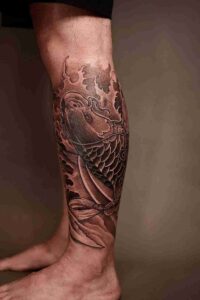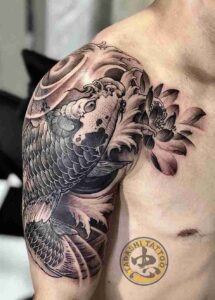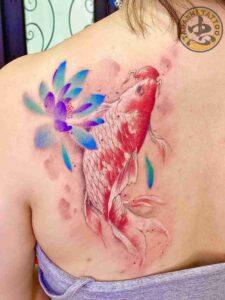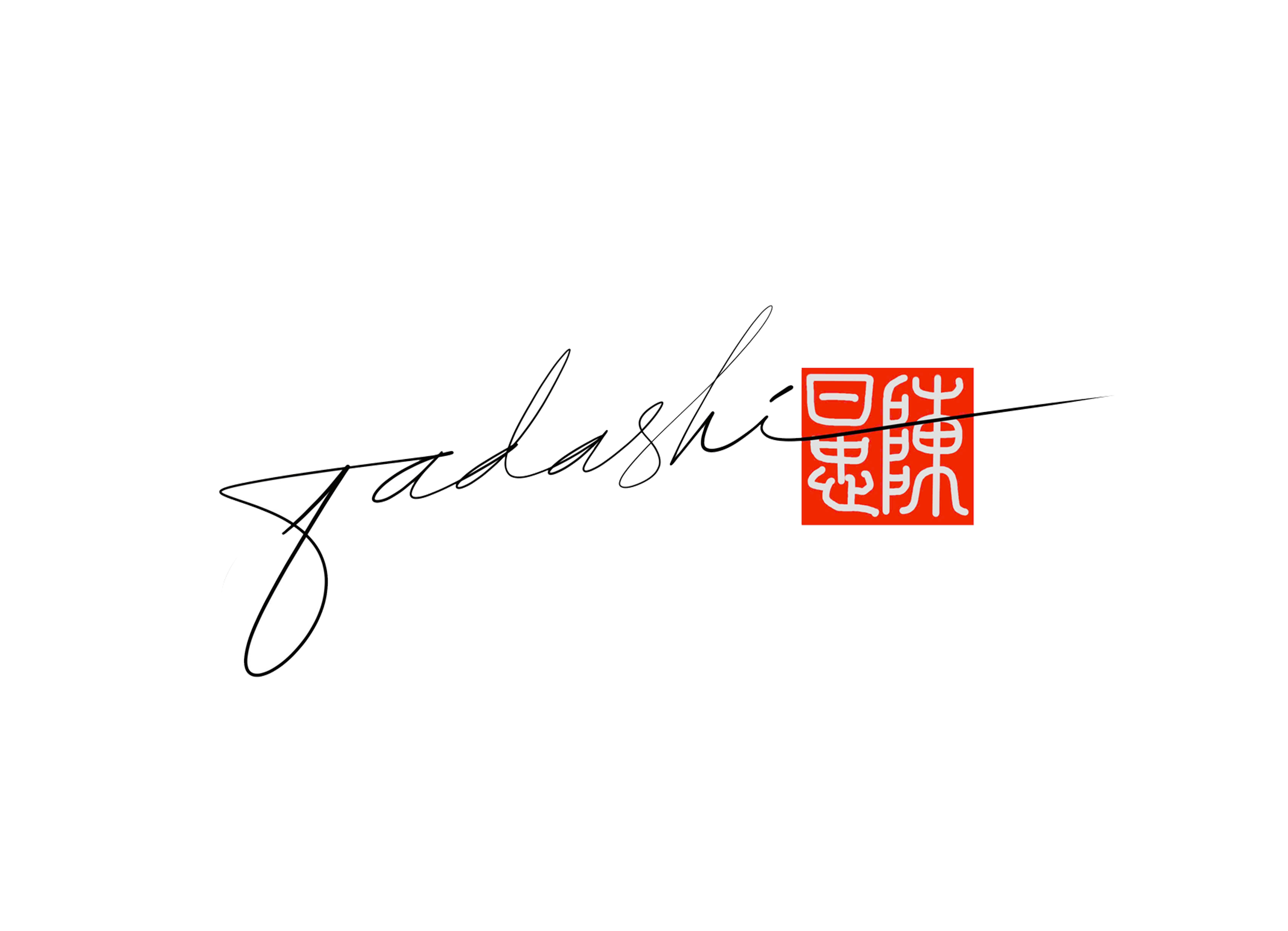A Japanese Koi fish tattoo is a dynamic piece, far surpassing a simple image; it’s a brilliant portrayal of significance. The use of red and gold signifies wealth and good fortune, while the ink-wash style black and gray waves provide a strong, powerful contrast. The tattoo commands attention by merging the Koi’s captivating beauty with its metaphor for unyielding defiance against the flow, reflecting the wearer’s luck and powerful drive toward triumph.
1. The Profound Symbolism of Japanese Koi Fish
With roots in the famous “Koi to Dragon” myth, the koi fish is a strong symbol. It embodies admirable human traits and the aspiration for great achievement.

1.1. Perseverance, Determination, and Strength Against the Current
This is a powerful symbol of unwavering willpower and the rock-solid determination to meet goals, regardless of life’s greatest obstacles. This meaning comes from the main legend, a koi bravely swam against the rushing Yellow River, overcame every challenge, and finally reached the legendary Dragon’s Gate waterfall. It strongly suggests that true strength is built during the fight to conquer adversity.
1.2. Transformation, Rebirth, and Glorious Success
After the single, persistent koi successfully jumped the Dragon’s Gate, the gods honored its effort by transforming it into a powerful golden Dragon. This powerful metamorphosis represents a deep personal transformation (rebirth)—breaking through boundaries to achieve a higher state of being and spectacular success. It signifies reaching destiny and finding a glorious reward after continuous, dedicated struggle.
1.3. Good Fortune, Prosperity, and the Aspiration for Achievement
The koi fish symbolizes luck, great wealth, and prosperity in many Asian traditions. It’s especially valued as a lucky charm that brings major success in career advancement or academic life, helping people overcome challenges to reach higher achievements and degrees.
1.4. Courage and the Warrior Spirit
The koi’s act of swimming upstream and leaping the waterfall demands extraordinary courage when facing life-or-death challenges. In Japanese culture, this quality is often compared to the Samurai spirit (Bushido), symbolizing bravery and a readiness to confront danger to protect honor and ideals.

1.5. Masculine Qualities (Especially in Japanese Culture)
In Japanese culture, the Koi fish symbolizes masculine traits, including strength, willpower, and endurance. The custom of hanging Koinobori (koi-shaped flags) on Children’s Day (May 5th) reinforces this. These flags wish that boys will develop the same health, resilience, and bravery as the legendary koi that successfully climbed the Dragon’s Gate waterfall.
2. The Significance of Japanese Koi Colors
The colors of Japanese Koi fish add deep meaning to their universal symbol of perseverance and strength. This is because the varied patterns are intentionally developed to signify concepts such as good luck, family, and personal development.
The color Black signifies masculine energy and the ability to overcome adversity; it represents success earned through struggle. This is a potent symbol for individuals who have conquered major life hurdles. In a family setting, the black Koi commonly stands for the father.
Beyond symbolizing intense love, courage, and might, the red Koi is traditionally associated with the mother or woman of the family in Japan. Importantly, when red Koi feature black markings, they can take on the meaning of passion and wrath.
The color blue embodies calmness and serenity, representing emotional balance even through periods of turmoil. Furthermore, the blue Koi is linked to masculine energy, fertility, and the son of the household.
Yellow represents wealth, prosperity, and good luck. The Gold Koi, or Yamabuki, links directly to the legend of the koi fish turning into a golden dragon, which symbolizes success and fortune. This makes it a highly desired option for attracting financial prosperity.
White is often associated with purity, spiritual journeys, and professional success. The best illustration is the Kohaku Koi (white and red), which is a direct symbol of career triumph. Interestingly, the White Koi may also be chosen as a symbol for a family’s sons.
Pink, on the other hand, is generally a symbol of femininity and is used to represent daughters in the family.
3. 5+ Wonderful Japanese Koi Fish Tattoo Designs for Men & Women

3.1. Sea Water, Pure Bloom
The tattoo features a vibrant red-and-white Koi (Kohaku) swimming powerfully against a surging current. The dark, monochromatic water provides a sharp contrast, dramatically highlighting the Koi’s unwavering defiance. Delicate, pale pink lotus or peony flowers soften the scene, adding an element of purity and peace.
The entire motif powerfully represents steadfast perseverance, bravery, and the ambition to conquer adversity and achieve greatness.
3.2. Dual Koi Dance
This tattoo features a striking pair of Koi (Dual Fish) swimming in opposite directions, creating a beautiful symmetry and color balance. One fish is a vibrant, energetic red, contrasting with the second one rendered in classic black and gray tones. Both gracefully navigate swirling waves and blooming Cherry Blossoms, symbolizing Yin-Yang balance, marital happiness, and the resolute will to overcome challenges together.
3.3. Blue Flame Koi Duo
The tattoo illustrates a brilliant Twin Koi design, set against a dynamic background of intense, dark gray and black swirling waves. The pairing of a blue Koi (Asagi) and a red-orange Koi (Ogon/Kikokuryu) provides a captivating visual difference. Bright, multicolored chrysanthemum (Kiku) blooms decorate the scene, symbolizing nobility and lasting beauty.
Ultimately, the piece speaks to balance in life, the harmony of opposites (Yin-Yang), and the owner’s fortitude and inner strength.
3.4. Dark Water, Fire Scales
The piece features a striking, solid black Koi whose intensity is elevated by its bright red eyes and matching red-flame fins and tail. It swims dramatically amidst dark, monochromatic black and gray waves, establishing an atmosphere of awe and enigma.
The black Koi represents unyielding will and triumph over challenges, while the red elements underscore authority and risk-taking. The resulting aesthetic is one of enchanting, bold, and powerful beauty.
3.5. Gold Light, Ink Wash
The design has a stunning layout, highlighting a shimmering, bronze-gold Ogon Koi as it elegantly navigates massive waves. The water uses a powerful black and gray palette to provide a dramatic and contrasting foundation. Surrounding the Koi are prominent Kiku (chrysanthemum) blooms in refreshing blues and teals, representing high status, long life, and the beauty of fall.
This piece symbolizes wealth, resilience against challenges, and a persistent, refined grace.
3.6. Meeting at the Dragon Gate
This design features a dynamic “Two Fish Koi” (Song Yu) intertwined in rough water. One fish is colored with imposing gold/black, and the second is a bold reddish-orange. Surrounding them are red-brown and yellow Japanese chrysanthemums—symbols of nobility and long life. The imagery conveys equilibrium, affluence, and the resolve needed to conquer all obstacles in both career and personal life.



